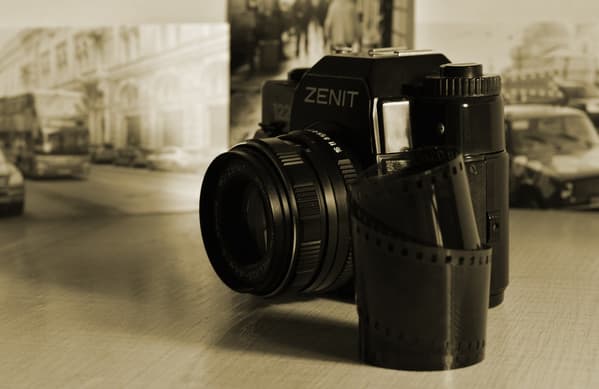Capturing Moments: The Art and Impact of Photography
Photography is more than a hobby or profession—it’s a powerful form of storytelling, a way to freeze time, and a universal language that transcends borders. From documenting historical events to capturing everyday beauty, photography shapes the way we see the world. In the age of smartphones and social media, almost everyone is a photographer in some way. But what separates a snapshot from a truly compelling image? It’s the intent, emotion, and connection behind the lens.
Even celebrities like Emma Watson have recognized the power of photography, not only through being photographed but also in promoting causes through visual storytelling. In one interview, Watson spoke about the importance of using photography to amplify social issues, showing her appreciation for the craft as more than surface-level vanity. Her collaborations with various photographers reflect how imagery can convey depth, emotion, and a message—something every great photographer aspires to achieve.
The Evolution of Photography: From Film to Phone
The journey of photography is a fascinating one. It all began in the early 1800s with the invention of the camera obscura and the first permanent photo captured by Joseph Nicéphore Niépce. This grainy black-and-white image marked the beginning of what would become an essential part of human culture. Over the decades, photography evolved from daguerreotypes and film rolls to digital cameras and, eventually, smartphone technology.
Each era brought new tools and possibilities. Film photography, for example, introduced the world to concepts like lighting, exposure, and composition in a more disciplined way. Every shot had to count, and photographers developed a keen eye for storytelling. Digital photography, which emerged in the late 20th century, revolutionized the medium. With the ability to shoot, preview, and edit instantly, photography became more accessible to the public.
Today, with platforms like Instagram and TikTok, visuals are central to communication. Everyone from influencers to activists utilizes photography to connect with audiences. Emma Watson, for instance, uses her platform not only for fashion editorials but to highlight causes like gender equality and climate change, often through poignant, professionally crafted images. It’s a reminder that photography is no longer confined to art galleries or photo albums—it lives in the palm of our hands, influencing millions.
The Emotional Power Behind the Lens
Great photography goes beyond technical skill. It captures emotion, mood, and story in a single frame. Whether it’s a war-torn landscape, a joyful wedding moment, or a candid street scene, a good photograph speaks volumes without needing words.
Portrait photography, in particular, has the ability to reveal a person’s essence. That’s why portraits of public figures like Emma Watson are so compelling. While she’s been in front of many lenses—from red carpet glamour to humanitarian campaigns—her most powerful photos are often the raw, unfiltered ones that showcase authenticity. Photographers who capture these moments build trust with their subjects, allowing them to drop their guard and be real.
Documentary photography is another genre that plays an important role in shaping public opinion. Think of the iconic images from the Vietnam War or the Civil Rights Movement. These photographs didn’t just capture history—they helped make it. In today’s world, documentary photographers are often the eyes and ears in crises, telling stories from the frontlines and helping the global community understand issues more deeply.
Photography also allows us to express our creativity. Through composition, light, color, and timing, a photographer crafts a visual poem. In fashion and editorial photography—fields in which Emma Watson has frequently appeared—art meets commerce, and style becomes a storytelling device. Every shoot becomes a visual statement, whether it’s about beauty, identity, or social change.

Why Photography Matters in a Digital Age
With billions of photos being taken every day, it’s easy to forget the true value of a single image. But photography matters now more than ever. It documents our personal lives and global events. It helps us process emotions and remember the past. It allows marginalized voices to be heard and seen.
Photography also influences how we perceive ourselves and others. The rise of self-portraits and curated online identities shows how much visual representation matters. Celebrities like Emma Watson, who actively shape their image through meaningful visuals, understand the power of narrative. But there’s also a growing movement toward authenticity in photography—highlighting imperfections, diversity, and real-life experiences.
For amateur and professional photographers alike, the goal remains the same: to tell a story. Whether you’re capturing a fleeting moment with your phone or composing a detailed shot with a DSLR, photography is a way to connect with your subject and audience. It’s about being present, observing, and sharing what you see with the world.
Education has also played a huge role in the growth of photography. From online tutorials to photography schools, people now have more access than ever to improve their skills. Some institutions even offer courses on the ethics of photojournalism and the responsibilities of visual storytellers—important topics in today’s hyper-visual culture.
Conclusion: Seeing the World Through a Different Lens
Photography is more than just an art form—it’s a mirror to our world and ourselves. It preserves memories, evokes emotions, and challenges perspectives. Whether it’s a protest captured on film, a heartfelt family portrait, or a stunning editorial with Emma Watson gracing the frame, photography continues to shape our lives and culture.
In a time where everyone has a camera in their pocket, the challenge is to be intentional. To pause before we snap. To ask ourselves: What am I trying to say? What story does this image tell?
As technology evolves and new platforms emerge, one thing is certain—photography will continue to be a vital tool for connection, expression, and change. So the next time you lift a camera or unlock your phone to take a picture, remember: you’re not just pressing a button. You’re capturing a moment that may one day mean everything to someone.

